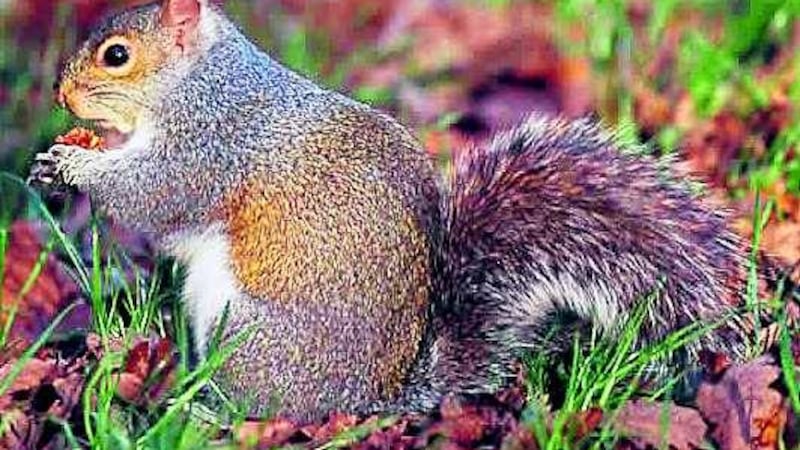Belfast researchers are looking for the public to donate time and cash to help learn more about grey squirrels' decline
SINCE the deliberate introduction of the grey squirrel to Co Longford in 1911, the distribution of the red squirrel has contracted in the face of competition and disease from its North American cousin.
Once common in Belvoir Forest park and the Lagan Valley, red squirrels (Sciurus vulgaris), or Iora Rua in Irish, have been replaced by grey squirrels (Sciurus carolinensis), or Ioras Glas in Irish, which are now found in every county of Northern Ireland.
A glimmer of hope for the long-term future of the red squirrel in Ireland appeared last year when a study from the National University of Ireland, Galway, found that grey squirrel numbers declined in the midlands.
The authors of this study put this result down to an increase in the range of the European pine marten (Martes martes). Where pine marten numbers were increasing, greys were disappearing and red squirrels were making a comeback after decades of absence. The pine marten is a mustelid (a relative of badgers and otters) that was once widespread in Ireland but persecution in the 19th and early 20th centuries led to its decline. However, it is making a comeback and it may offer a solution to the grey squirrel problem in Britain and Ireland. As a result of these findings, Ecologist Dr David Tosh of Queen's University Belfast's Quercus research centre and Dr Hansjoerg Kunc, a lecturer in behavioural ecology at Queen's, decided to undertake a study to investigate what the reasons for this decline might be. Animal behaviour researcher Lily Price has also joined the team.
Grey squirrels are not a major part of the pine marten's diet in Ireland so predation cannot explain the results of the study from Galway. Might a type of climate of fear, created by the pine marten, be the cause of the grey squirrel decline? Native prey species, like the red squirrel, generally develop predator recognition and avoidance techniques through co-evolution with native predators. An invasive species with little or no contact with the native predators in the area would most likely not recognise the native predator and thus not react to it to avoid predation.
Quercus's study is looking to see if the invasive grey squirrel recognises and avoids the scent of pine marten when compared the native red squirrel.
They will be setting up squirrel feeders with cameras to record whether red and grey squirrels visit feeders with and without the scent of a pine marten. How the squirrels react will reveal whether the presence of pine marten has something to do with the decline of greys in the midlands.
Researchers undertook a trial in 2014 to investigate what was going on but they now need the public's help to ensure what they have observed is widespread.
They want to recruit people in the greater Belfast area that regularly have grey squirrels visiting their gardens to participate in the study. Participants will have a feeder and a camera placed in their garden to record squirrel behaviour.
If you think you could help and would like more information then please contact Lily Price via lprice02@qub.ac.uk.
By contributing to this study people will help researchers understand whether or not the pine marten has a role to play in the conservation of the red squirrel in Ireland and Britain.
If you do not have grey squirrels in your garden then you can still help. A kickstarter campaign aimed at raising funds is going live within the next week.
The project is called The Predator Prey Project and its target is to exceed £2,198. Donations can be as little as £1, for which you will receive an email of thanks, right up to £200, which will get you a personalised, private nature walk, and talk for an individual, school or community group.
If you feel you would like to donate to help fund the project log on to kickstarter.com to find out more.


